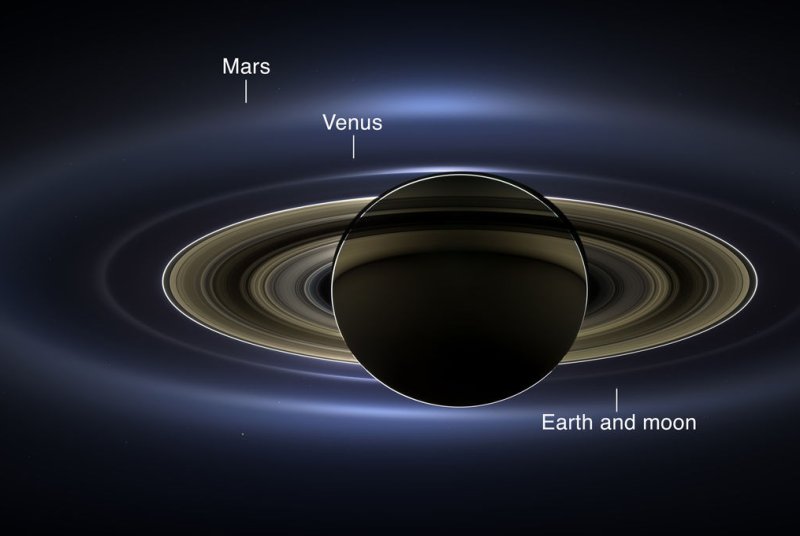NASAÕs Cassini spacecraft took this natural-color portrait on July 19, 2013, which is the first image to show Saturn, its moons and rings, plus Earth, Venus and Mars, all together. The new panoramic mosaic of the majestic Saturn system shows the view as it would be seen by human eyes, was unveiled on November 12, 2013 in Washington, DC. Cassini's imaging team processed 141 wide-angle images to create the panorama. The image sweeps 404,880 miles (651,591 kilometers) across Saturn and its inner ring system, including all of Saturn's rings out to the E ring, which is Saturn's second outermost ring. For perspective, the distance between Earth and our moon would fit comfortably inside the span of the E ring. Rings were named in order of their discovery rather than their position around Saturn. UPI |
License PhotoThe gap between Earth's path and that of Saturn -- the sixth planet from the sun and the second largest behind Jupiter -- is 830 million miles.
Between dusk Tuesday and dawn Wednesday, Saturn and the moon will move closer together in the night sky -- before setting in the west-southwest. For viewers in New Zealand and Australia, the two objects will converge overnight, with the moon actually blocking the view of Saturn.















